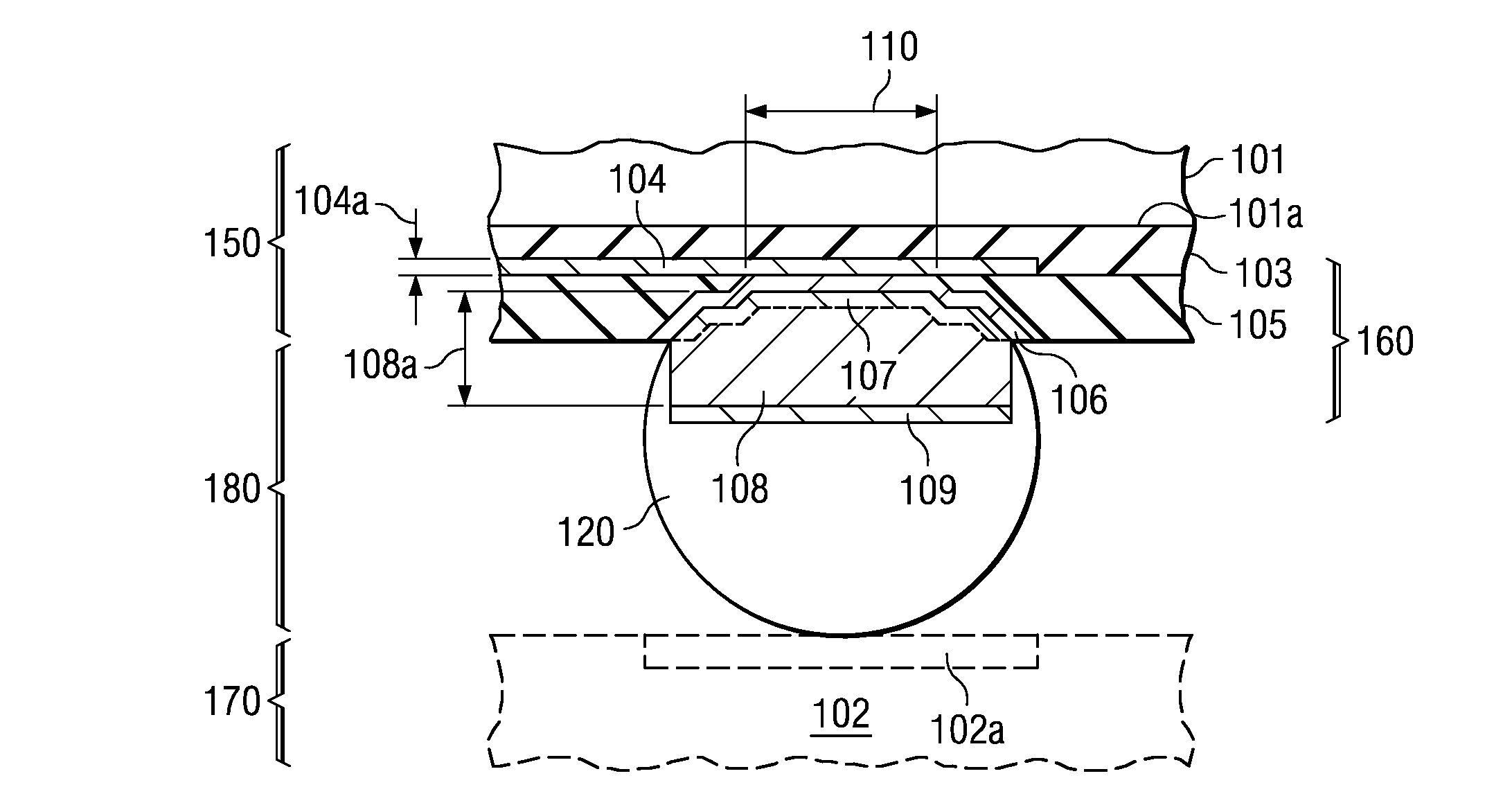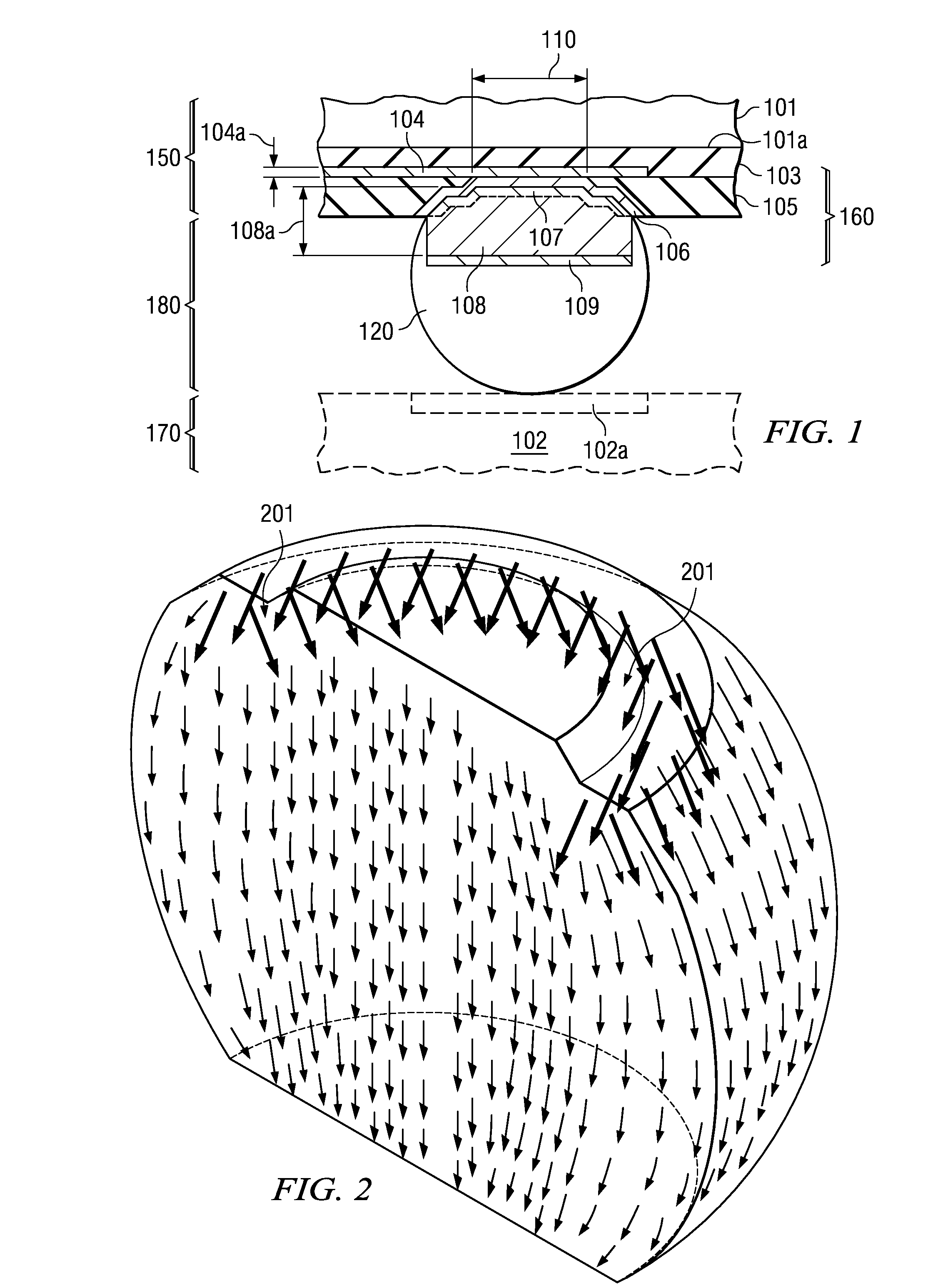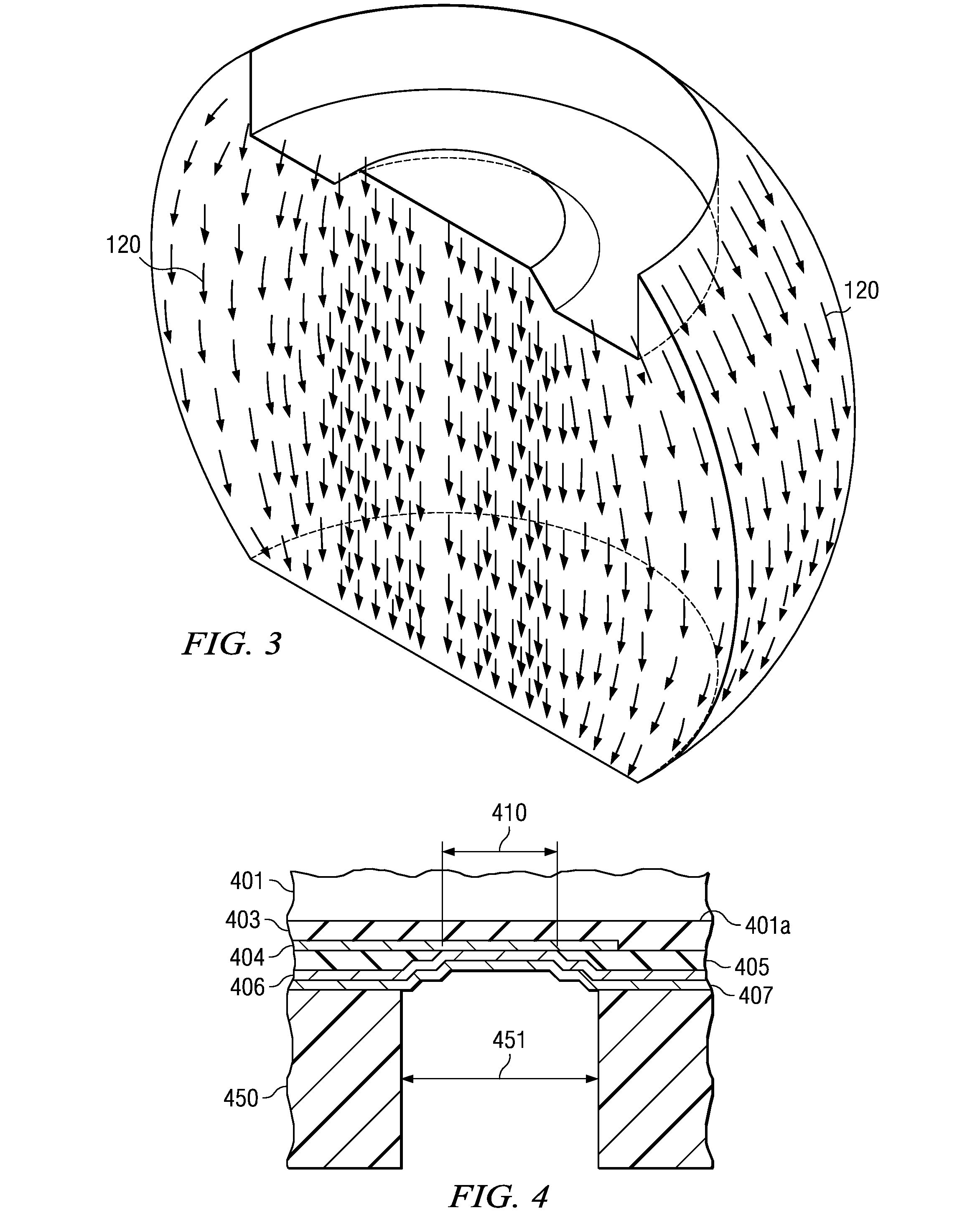Electromigration-Resistant Flip-Chip Solder Joints
a flip-chip solder joint, electromigration-resistant technology, applied in semiconductor devices, semiconductor/solid-state device details, electrical apparatus, etc., can solve the problems of large electromigration voids at copper/solder joints, degrading etc., to reduce the formation of kirkendall voids, and improve the reliability of joints.
- Summary
- Abstract
- Description
- Claims
- Application Information
AI Technical Summary
Benefits of technology
Problems solved by technology
Method used
Image
Examples
Embodiment Construction
[0022]FIG. 1 illustrates an embodiment of the invention including a portion of a semiconductor chip 150, a structured contact pad 160 of the chip, and a solder ball 120 intended for electrical connection to external parts 170. The connection of contact pad 160 and solder 170 is reliable under the conditions of both accelerated stress tests and lifetime device operation, since the connection is structured to suppress electromigration as well as intermetallic formation and Kirkendall voiding.
[0023]In FIG. 1, the semiconductor material 101 has a surface 101a, which is covered by an interlevel dielectric layer (ILD) 103. The ILD may include silicon dioxide or mechanically weak materials of low dielectric constant such as silicon-containing hydrogen silsesquioxane. The thickness of layer 103 may vary widely (from 20 to 1000 nm), but is typically quite uniform across the wafer diameter. On the outward-facing surface of ILD layer 103 is an interconnect trace 104, which is a patterned inter...
PUM
 Login to View More
Login to View More Abstract
Description
Claims
Application Information
 Login to View More
Login to View More - R&D
- Intellectual Property
- Life Sciences
- Materials
- Tech Scout
- Unparalleled Data Quality
- Higher Quality Content
- 60% Fewer Hallucinations
Browse by: Latest US Patents, China's latest patents, Technical Efficacy Thesaurus, Application Domain, Technology Topic, Popular Technical Reports.
© 2025 PatSnap. All rights reserved.Legal|Privacy policy|Modern Slavery Act Transparency Statement|Sitemap|About US| Contact US: help@patsnap.com



